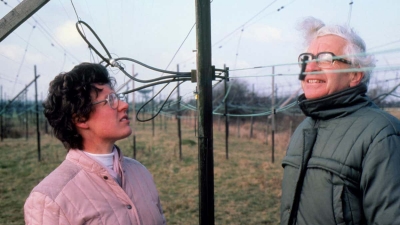
In 1967, a radio signal was detected using the Interplanetary Scintillation Array of the Mullard Radio Astronomy Observatory in Cambridge, UK, by Jocelyn Bell Burnell. The signal had a 1.337302088331-second period and 0.04-second pulsewidth. It originated at celestial coordinates 19h 19m right ascension, +21° declination. It was detected by individual observation of miles of graphical data traces. Due to its almost perfect regularity, it was at first assumed to be spurious noise, but this hypothesis was promptly discarded. The discoverers jokingly named it little green men 1 (LGM-1), considering that it may have originated from an extraterrestrial civilization, but Bell Burnell soon ruled out extraterrestrial life as a source after discovering a similar signal from another part of the sky.
The original signal turned out to be radio emissions from the pulsar CP 1919, and was the first one recognized as such. Bell Burnell noted that other scientists could have discovered pulsars before her, but their observations were either ignored or disregarded. Researchers Thomas Gold and Sir Fred Hoyle identified this astronomical object as a rapidly rotating neutron star immediately upon their announcement.
Picture Credit : Google



